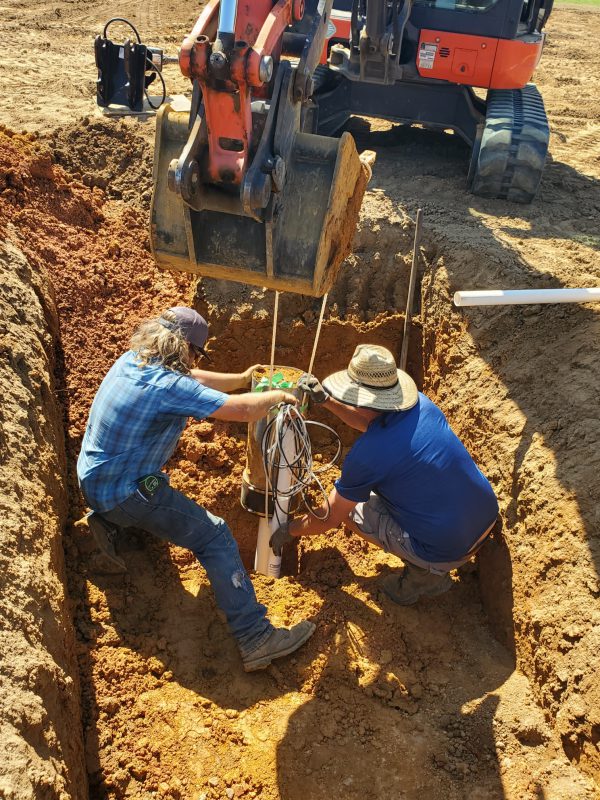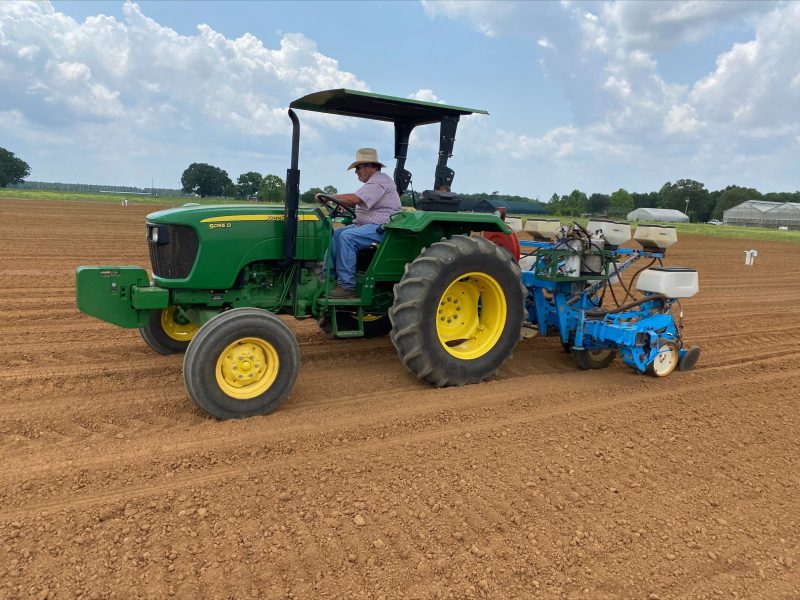Libbie Johnson, Santa Rosa County Extension and Ethan Carter, Regional Row Crop IPM Agent
Great news for all of our Florida cotton producers: the nitrogen (N) rate project has started! The UF/IFAS cotton recommendation is 60 units of nitrogen, which has been argued by growers as insufficient for certain soil types and current varieties given their ability to produce higher yields. This problem has been exacerbated by Florida Senate bill 712 which mandates all cotton growers follow the 60 unit IFAS rate with exceptions for leaching rains. The research project for “Developing Improved Nitrogen Recommendations for Florida Cotton Growers” has two main objectives:
- Provide justification to update UF/IFAS N fertilizer recommendation rate to achieve the greatest cotton yield without impacting water resources
- Quantify yield optimization and N leaching under different N fertilizer rates, including the current UF/IFAS rate, during cotton production in Florida.
This multi-year project is being conducted at the two research stations that are in the two counties with the greatest cotton production: West Florida Research and Education Center (WFREC), in Santa Rosa county, and North Florida Researhc and Educaiton Center (NFREC) in Jackson county. The WFREC-Jay plots will be managed with dryland (rain-fed) production, while NFREC-Marianna (Greenwood) plots will be irrigated. There will be 6 nitrogen rates for both locations: zero, 45, 90, 135, 180, and 225 units of N for the growing season. Some of these rates are higher than what commercial farmers would use to be help to determine the plateau of the optimal N rate for Panhandle cotton production.
–
Lysimeters (WFREC location only)
The plots at WFREC had lysimeters, 3 foot deep, installed the week of May 9th by skilled technicians from the Suwannee Valley Research and Education Center.

Lysimeter application by two SVREC technicians at the Jay Research station. Photo by Libbie Johnson
–
These lysimeters are crucial to this project; they will enable UF/IFAS to capture the rainwater that has infiltrated through the soil and collect the leached nitrogen applied in the plots. If left uncollected, water with excess nutrients could reach subsurface water that is used for drinking, and other uses. Reducing nitrogen that can be leached into our domestic water supply is key to protecting all Floridians and also to the sustainability of our natural systems both inland and on the coast. Each lysimeter will need to be pumped regularly after rainfall events and the water analyzed.
–
Planting
Cotton cultivar DPL 2038 was planted at both locations, with 4” between seed (3 seed/ft = 43,563 seed/ac on 36” row spacing). After the lysimeters were installed at the Jay Research Station, the ground was properly prepared based on the project protocol. On May 18th, James “Moo” Brown planted at the Jay Research Station. As seen in the picture, the outlets for the lysimeters are visible in the alleys between the planting strips.

Moo planting cotton in the 2022 N rate trial. Photo by Dr. Singh.
–
The NFREC-Marianna site will be planted the week of May 23rd with similar parameters as Jay. The key difference between the two sites is that Marianna is irrigated without lysimeters. Research plots at NFREC will be irrigated as necessary.
–
Data Collection
Aside from the lysimeter leachate collection, more data will be collected. To support the fertility research generated from this study, the following measurements will be taken at both locations:
- Stand Counts
- Canopy Growth and Progression (four weeks after planting through crop maturity)
- Greenness measurement (NDVI) biweekly, 4 weeks after planting through crop maturity
- Petiole and leaf sampling (weekly starting at first bloom through 5 weeks after bloom)
- Above ground biomass collection
- Plant height at crop maturity
- Yield weight and fiber quality
After harvest, soil core samples at a 36 inch depth will be taken for nitrogen and carbon analysis.
This is the first of monthly updates on this project. We would like to thank our Advisory Committee for their input on this Nitrogen Fertility Update project. Cotton growers include the following: Brett Ward, Jerry Davis, Nick Marshall, Phillip Melvin, Jeff Pittman, Mike, Steven, and John Jordan, Larry Ford, David DeFelix, Sonny Davis, Craig Bishop, and Ernest Fulford. Industry representatives include Bae Lamastus, Wes Briggs, Blaire Colvin Comancho. Our UF/IFAS representatives are Jennifer Bearden, Dr. Michael Dukes, Dr. Sheeja George, Daniel Leonard, Dr. Lakesh Sharma, Dr. Sudeep Sidhu, Dr. David Wright, Joseph Iboyi, Ethan Carter, and Libbie Johnson.
